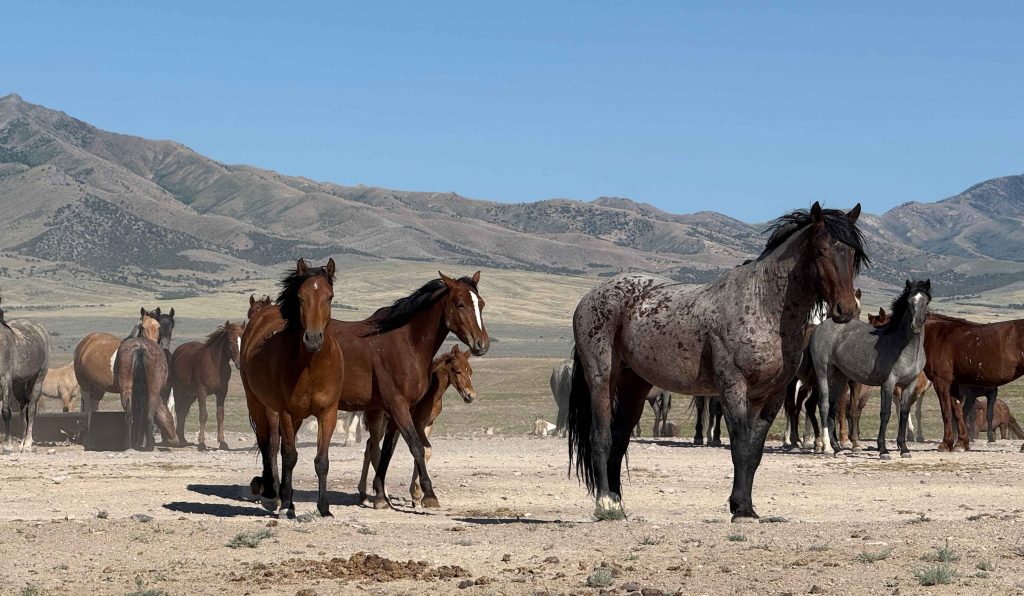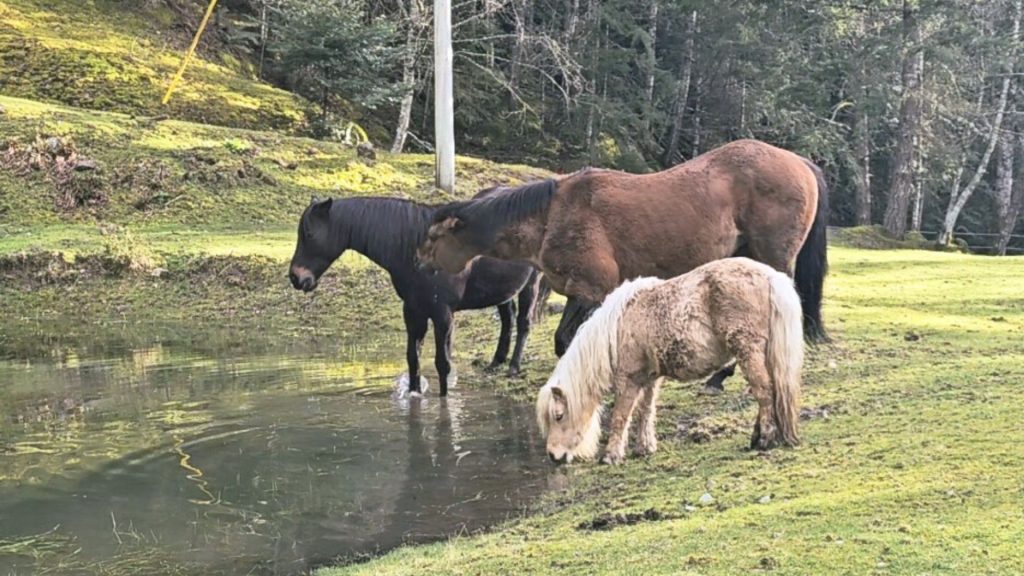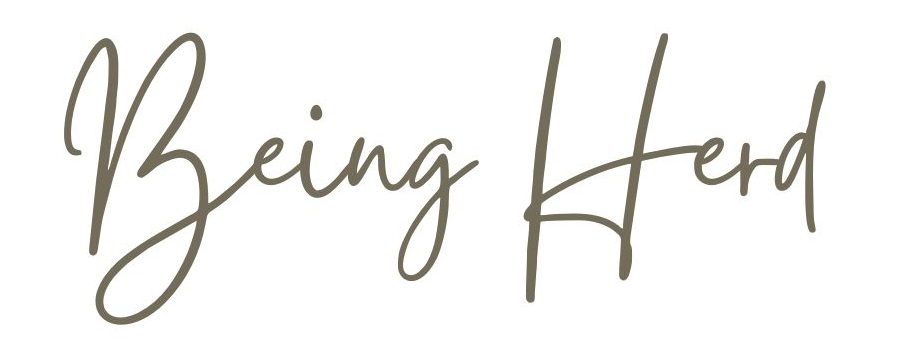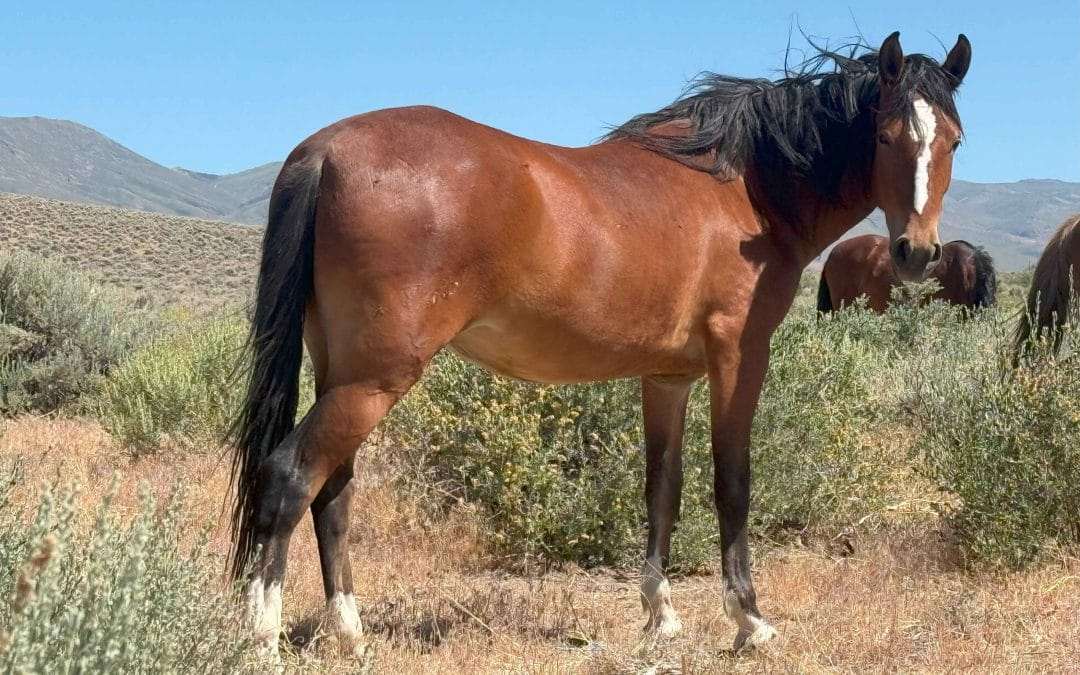You love your horse. You care. You try to be kind, fair, and respectful. And yet – your horse keeps stepping into your space.
1. When Boundaries Feel Personal
Maybe they lean into you while standing still. Maybe they nudge your arm, sniff your pockets, or brush right past you without hesitation. And you’re left wondering:
“How can I set a boundary without using pressure or pushing them away?”
“Why does my horse ignore my boundaries – especially when I’m trying to be gentle?”
Let’s be clear: we’re not talking about a horse defending its herd or reacting to a threat. This isn’t about protection or leadership at the edge of a group. This is about social closeness – and what it means within the relationship.
Because when a horse comes too close, it’s not always about dominance.
It’s not even always about behavior.
Sometimes, it’s about misunderstanding.
Sometimes, it’s about emotion.
And sometimes, it’s about what we are communicating – without realizing it.
So instead of asking, “How do I fix this?”, we might start by asking something else:
What is my horse trying to tell me – and what have I maybe missed?
2. What It Actually Means When a Horse Invades Your Space
Not every moment of closeness is a boundary issue. Horses stand near each other all the time – especially when resting, grazing, or just existing peacefully together. So the question isn’t “Is my horse near me?” but:
👉 “Is the way they approach me clear, respectful, and mutual – or is it pushing?”
Sometimes a horse will simply walk up and stand near you. That’s fine – especially if they stay slightly to the side, give you space to move, and are calm and relaxed. But if your horse starts bumping, rubbing, nudging, mouthing, or leaning, that’s a different message.
Let’s break it down:
- Quiet approach with soft eyes? Likely trust and curiosity.
- Repeated bumping or nose-pushing? Could be play, frustration, or a learned habit.
- Nibbling at clothing, ropes, or your body? Often a mix of social exploration and boredom – or a sign that the horse is trying to connect but isn’t sure how.
The truth is: when your horse invades your space, it’s rarely about testing you. It’s more often about confusion – or a desire to connect that’s not yet fully understood by either side.
And once we start seeing these moments not as disrespect – but as a conversation—we open the door to new understanding. Because boundary issues don’t begin with control.
They begin with clarity.

3. Why Horses Ignore Boundaries: It’s Not Always About Us
When a horse pushes into your space, it’s tempting to think: They’re not respecting me.
But often, it’s not personal. And it’s certainly not about rebellion. The reasons a horse might cross your boundaries are as individual as the horse itself. Some are rooted in personality. Others in experience. And many have nothing to do with “disrespect” at all.
Let’s take a closer look – because the more we understand why a horse behaves this way, the better we can respond with clarity and compassion.
🔥 Character Type & Element
Some horses are simply built for closeness. Fire-type horses, for instance, are naturally expressive, physical, and often crave connection through touch. They might rest their muzzle against you, lean in while you stand still, or even rub their head on your shoulder as a form of affection.
Water horses, on the other hand, are more internal. Sensitive. They might need more distance to feel safe – and pushing too close is rarely their style.
So before you interpret a boundary issue as “rude,” ask yourself: Is this just their way of saying hello? Or a sign that their character moves differently through the world?
🐴 Age, Gender & Stage of Life
Young horses – especially colts and recently gelded males – are often physically forward. They’re still learning how to socialize, where their own space ends, and how to read more subtle signals. Just like teenagers, they explore boundaries not to be difficult, but because they’re still figuring it all out.
Older mares, by contrast, are often more composed. They tend to communicate with less physicality and more subtlety. So yes – who your horse is matters when it comes to boundaries.
😑 Boredom & Understimulation
Sometimes a horse gets too close… because they’re simply under-stimulated.
If their daily life lacks variety, meaningful interaction, or a sense of shared purpose, they may turn to you with playful nudges, gentle pestering, or restless fiddling – not because they’re misbehaving, but because they’re craving something. Contact. Interaction. Novelty.
This isn’t about being pushy. It’s about saying, “I need more.”
💛 Kindness Misunderstood: Social Contact Gone Awry
Here’s something we rarely hear in training circles:
Sometimes a horse gets too close because they like us.
A gentle bump might be a grooming request. A repeated nudge could be an invitation to play. Horses who feel safe with us might offer affiliative contact – just as they would with another herd member.
But what’s friendly to them can feel overwhelming to us, especially if we misread the signal. So rather than correcting too soon, it helps to pause and ask: Is this dominance – or is it a clumsy attempt at connection?
⚠️ Trauma, Mistrust & Defensive Strategies
If a horse has been ignored, misunderstood, or punished for subtle signals in the past, they may stop trying to be subtle at all. They might lunge, barge, or push – not because they want power, but because they’ve learned that gentler communication doesn’t work.
In other words: they’re not crossing your boundaries to dominate you.
They’re crossing them because theirs were never respected.
🧱 Blurred Boundaries from Past Violation
When a horse’s own boundaries have been violated—over and over again—they may lose the internal sense of what a boundary even is.
This isn’t aggression.
It’s confusion.
A wound, not a flaw.
Horses who’ve endured invasive handling or lived in environments where they were never allowed to say “no” might not recognize our space either – not because they don’t care, but because that part of them has gone numb.
These horses don’t need correction.
They need clarity.
And above all, they need space to feel safe enough to notice the difference between connection and pressure.
👣 And What About Us?
Of course, it’s not always just the horse.
Sometimes we send unclear messages. We hesitate. We overthink. We smile while saying “no.” Or maybe even—we don’t ‘say’ anything at all, even though something feels too close.
Maybe we don’t feel ready to set a boundary.
Maybe we long for closeness and feel guilty saying “not now.”
Or maybe we carry our own old stories about not being allowed to say no.
And our horses feel that – instantly.
So if your horse ignores your boundaries, it’s worth asking: Am I being clear? Consistent? Honest? Or is there something I’m still sorting out in myself? The good news? Whatever the reason – on their side or ours – there’s a way forward. And that’s where we’re headed next.
4. Rethinking the Myth: It’s Not About Dominance
We’ve been taught to see it a certain way. When a horse walks into our space – leans too close, nudges, or lingers – we’re told they’re being dominant. Testing us. Trying to move up the hierarchy.
But here’s the truth: in real horse herds, that’s not what’s happening.
Closeness isn’t about power.
It’s about relationship.
In a stable herd, horses don’t constantly establish rank. Once roles are clear, they don’t need to prove anything. The stallion doesn’t patrol his mares to remind them who’s boss. An older mare doesn’t knock others aside just to stay “in charge.” There’s no ongoing game of who’s leading who.
What we do see is social contact – gentle proximity, grooming invitations, play, rest, shared movement. Horses that trust each other stand close. They lean in. They touch. Not to dominate – but to connect.
So when your horse crosses into your space, it’s rarely an act of rebellion.
More often, it’s an attempt at communication.
Sometimes it’s affection.
Sometimes confusion.
Sometimes a history of not being heard.
And yes – sometimes it is too much. Sometimes it needs a clear boundary.
But that doesn’t make it a dominance issue. It makes it a moment of misalignment – a chance to pause and ask:
“What is my horse trying to tell me?”
Because when we stop seeing boundaries as a fight for power – and start seeing them as part of an ongoing conversation – everything softens – and true leadership begins.
5. How to Set Boundaries – Naturally, Clearly, and With Respect
If your horse comes too close – leans in, pushes, or crowds you a little – it’s easy to feel unsure. Do you correct it, or is it just your horse being friendly? Is this connection, or is it a moment to set a strict boundary?
Horses set boundaries all the time – with clarity, and without drama.
And we can, too.
And it doesn’t have to mean a lot of pressure or even punishment.
Let’s instead look at two peaceful and natural ways to say “no” – that your horse will immediately understand.
➡️ Passive Clarity – Saying No Without Pressure
In wild herds, not every “no” is active.
Sometimes it’s as simple as walking away.
A horse turns their head away. Shifts slightly. Moves off when there is no desire for contact.
There’s no big gesture. Just quiet, consistent refusal.
You can do the same.
Turn your body slightly. Look, and then walk away when your horse gets too close. Avoid eye contact. Let your posture say, “Not now.”
This works especially well with young horses or friendly types like Fire or Earth characters, who tend to offer more contact than others. They’re not trying to be disrespectful – they’re just expressive.
But if you quietly and consistently show that you need more space, they’ll get it.
Not after one try.
But after two, or three.
Because persistence – not harshness – is what brings clarity. And once the horse understands your “no,” the invitation to connect becomes even more meaningful.
➡️ Active Clarity – Giving a Clear but Natural Signal
However, sometimes, a passive approach isn’t enough. Some horses miss the subtleties – or ignore them on purpose, especially if they’ve learned that human boundaries are inconsistent.
That’s when it’s time to give a more direct signal – but again – not through domination.
In a herd, when a horse sets a boundary clearly, it often happens through:
- a shift of energy through the chest,
- a quick step forward from the hindquarters,
- a swing of the head – not as aggression, but as a natural communication tool.
What you don’t see? Horses aiming for the face.
So when we set boundaries, we stay in that same language:
- Step toward the horse’s shoulder or ribs – not the head.
- Use your core and intention to fill the space.
- Be grounded, clear, and direct – no anger, no drama.
- And as soon as the horse shifts away, soften again.
The key is: it has to be real.
If you’re unsure, ambivalent, or subconsciously longing about the closeness, your horse will feel that. They’ll sense the gap between your words and your energy – and ignore the signal.
And be careful not to accidentally invite play.
If you smile, bounce, or stay too long in the energy, your horse might think it’s a game. Especially young geldings or Wood types.

In pretty much all cases, that’s all it takes.
What if none of that works?
If your horse repeatedly ignores early, clear signals, and you need to make a point – you can add a final cue. A firm touch to the shoulder (where you want them to move away). A short, firm signal – not to punish, but to say: “You missed all my whispers. I really meant it.”
And then, soften. Reset. Reconnect. Because boundaries aren’t about walls.
They’re about building a conversation your horse can trust.
6. Boundaries Don’t Break Connection – They Protect It
Setting a boundary with your horse doesn’t mean you’re rejecting them.
In fact, the opposite is true.
Real connection isn’t built on constant ‘yeses’. It’s built on trust. And trust can only grow when both beings feel safe to say: “This is what I need.”
When your horse comes too close – and you respond with clarity and kindness – you’re not pushing them away.
You’re showing them that this relationship has shape, rhythm, and mutual respect.
You’re saying: “I want to be close to you. But in a way that feels good for both of us.”
And that’s exactly what horses do with each other.
They don’t stay glued together out of obligation.
They flow in and out of closeness – because the space between them is safe, too.
When we set boundaries with softness and consistency, we create the kind of relationship where both horse and human can breathe.
Because closeness only means something… when it’s chosen.
And boundaries? They make that choice possible.
7. Final Thoughts: Understanding Is the Beginning of Trust
When your horse steps into your space, it’s not always a problem to be solved.
Sometimes, it’s an invitation.
To look closer.
To ask: What are they really saying?
To notice what’s missing – and what’s possible.
Because closeness isn’t misbehavior. It’s communication.
And when we meet it with curiosity instead of control, everything shifts.
Your horse might not be ignoring your boundaries.
They might be asking:
Can I trust your signals? Can I trust you with mine?
And that’s not a test.
It’s a moment of possibility.
Because real relationship isn’t something we “achieve”. It’s something we build – step by step, through listening, through presence, through trust that goes both ways.
🌿 Does That Feel True For You Too?
If it does – and if you want to move beyond techniques and into a relationship where trust leads the way – I’d love to walk that path with you.
I created a free guide called:
“Into the Herd – How to Be Invited Into Your Horse’s Herd, Naturally.”
It’s a practical and heartfelt invitation to explore how wild horses communicate – and how you can build true, mutual connection with your own horse, step by step.
📥 Download the free guide here
And if this resonates even deeper, I’d love to welcome you into Being Herd – an ongoing library of videos, deep dives, and tools to help you explore leadership, trust, communication, and mutual growth. All inspired by the wisdom of wild horses, and the natural leadership they teach us every day.
🌱 Learn more about Being Herd here
Because your horse already knows how trust works.
They’ve always known.
Now it’s your turn to remember it – with them, and for them.
Thanks for being here.
For your horse – and for yourself. 🐴💛


Recent Comments